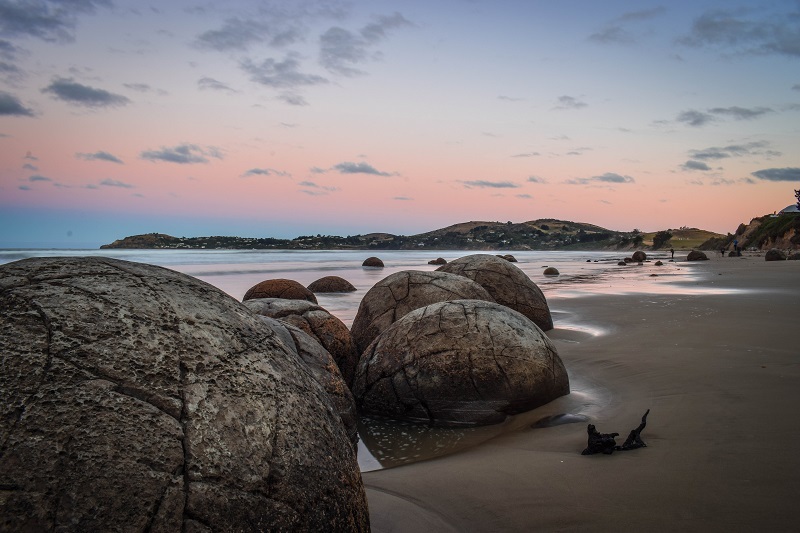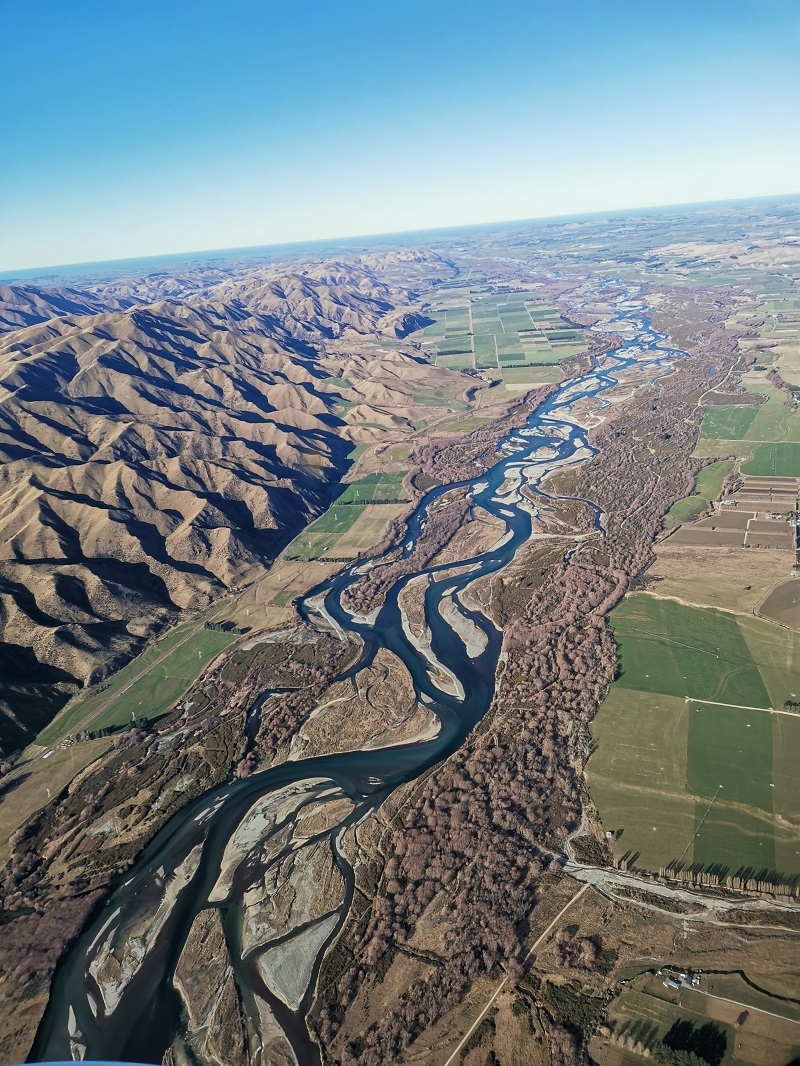'Absolute joy' over Unesco Geopark rubber stamp
Ashley Smyth
25 May 2023, 1:46 AM
 Waitaki Whitestone Geopark Trust chairperson Helen Jansen and Geopark manager Lisa Heinz are thrilled to receive official Unesco certification. PHOTO: Ashley Smyth
Waitaki Whitestone Geopark Trust chairperson Helen Jansen and Geopark manager Lisa Heinz are thrilled to receive official Unesco certification. PHOTO: Ashley Smyth“I burst into tears . . . I think it’s that relief that the wait is finally over.”
Waitaki Whitestone Geopark Trust chair Helen Jansen is ecstatic at the news that more than 7,200 sq km of the Waitaki has been rubber-stamped as an official United Nations Educational, Scientific and Cultural organisation (Unesco) accredited Global Geopark.
A Global Geopark is defined by the organisation as: “a single, unified geographical area where sites and landscapes of international geological significance are managed with a holistic concept of protection, education and sustainable development.”
The Waitaki Whitestone Geopark Trust submitted its application to Unesco in November 2019.
After a two-year wait due to the Covid-19 pandemic, Unesco assessors Nickolas Zouros, of Greece, and Anchel Belmonte Ribas, of Spain, visited the district for a three-day evaluation last July.
The Unesco Global Geopark Council recommended the application made by Waitaki Whitestone be accepted by the Unesco executive board in September last year.
It was one of 18 nominations presented to the board for its endorsement during their session this week.
“We were told, assured, that it was all fine, but until you have had that official sign off, you cannot [know] for sure. Oh, the relief, the joy,” Helen said. “Absolute joy!”
Whitestone Waitaki is Australasia’s first and only Unesco accredited Geopark, and New Zealand is one of only 48 countries globally to have received the recognition. The accolade highlights the importance of the region's unique geological and cultural heritage.
“This is big-deal stuff,” Helen said.
“We’ve joined a very elite group of Geoparks with the highest designation - because there are about 1000 Geoparks around the world, but only 195 have got that ultimate UNESCO Global certification.”
Geopark manager Lisa Heinz said the desire to create a Geopark in the Waitaki started with the establishment of the Vanished World Trail, and the Vanished World Centre, in Duntroon.
“[It] would not have been possible without the enormous contribution that the volunteer members of the Vanished World Incorporated Society have made,” she said.
“It is humbling to see how more and more communities have become an active part of the Waitaki Whitestone Geopark over the years.”

Te Kaihinaki (Moeraki Boulders). PHOTO: Supplied/Whitestone Waitaki Geopark
A celebration weekend is being planned for the end of October, when the weather is warmer, with a variety of events and activities on offer, Lisa said.
The trust hopes this will allow everybody to celebrate the milestone, learn more about the area, and feel part of a global network of Geoparks that care for its environment and people, she said.
Now accreditation has been received, the next step is “knocking on doors” for funding.
“Which we’ve been trying to do for the last couple of years, and been told ‘come back when you have the stamp’.
“So now’s the time to see whether that actually comes true - with corporates, with Government, with other grants . . . so it will help us in that process of gaining the funds for the things we have to do - for community engagement, events, education, sustainable tourism initiatives.”
A Unesco Global Geopark is re-evaluated every four years, Lisa said.
“So it’s a constant improvement concept.”
The main projects recommended by Unesco are mainly around improving visibility, and encouraging more Geopark products and experiences.
“So these are sort of the two main bits that we will be working on. And of course continuing our community engagement, education programme,” she said.
“It’s such a collaborative endeavour. While we are the Geopark Trust, this is for the whole district and everyone in it.”
The designation will benefit the Waitaki District and New Zealand as a whole, by boosting tourism and providing opportunities for local businesses and communities to develop sustainable tourism initiatives, Lisa said.
It will also provide opportunities for students and researchers to study the area's geology and cultural heritage, Helen said
“We are making a significant contribution to the global understanding of the land and its cultures.”
The partnership with Mana Whenua has been key to the success of the Geopark application, providing a significant means of telling the story of the people of the land.
Te Rūnanga o Moeraki Upoko David Higgins welcomed the announcement and saw the support from Unesco, as recognition of the Waitaki’s “ancestral landscape and cultural sites and their significance to Kāi Tahu whānui”.
“We see this as a positive step forward to support our aspirations to protect these sites for visitors and future generations to enjoy.”
Waitaki Mayor Gary Kircher said the certification had been a long time coming, and was thanks to the work of many volunteers.
“The opportunities this creates for us now need to be built on, to make Waitaki the best Global Geopark in the Southern Hemisphere, sharing our stories with the world.”
Unesco’s New Zealand National Commission chairperson Liz Longworth offered her congratulations on the achievement.
“As a designated Unesco Global Geopark, Waitaki Whitestone Geopark is no longer a single entity, but part of a network that raises awareness of our geological heritage on a global scale. A network that will help promote and enhance sustainable geotourism in the Waitaki region to a domestic and international audience.”

The Waitaki River. PHOTO: Supplied/Whitestone Waitaki Geopark



